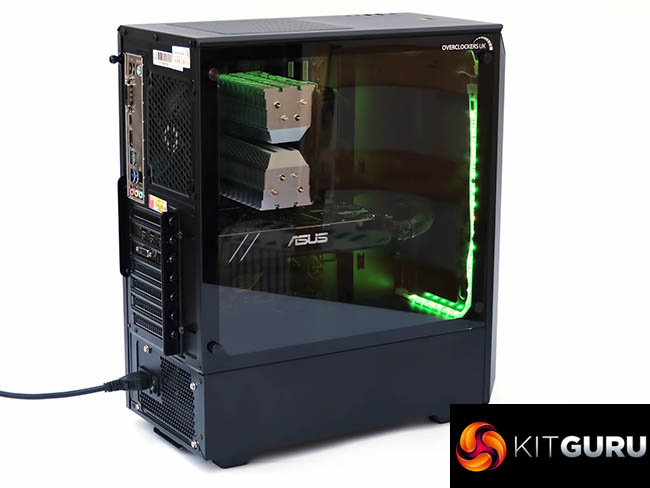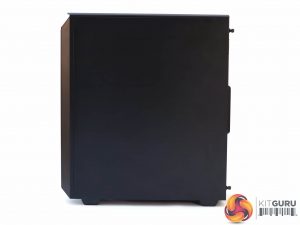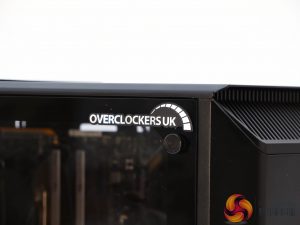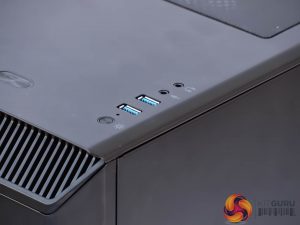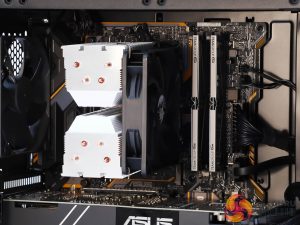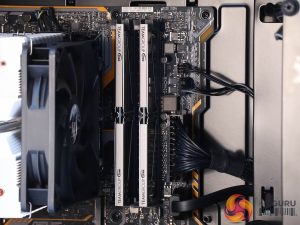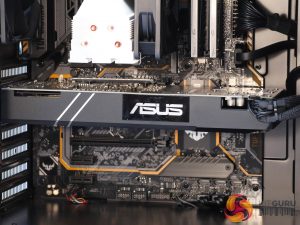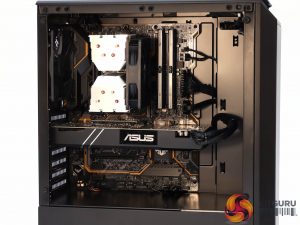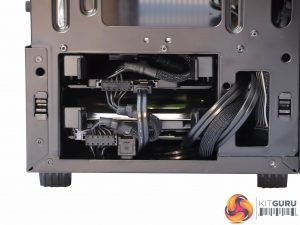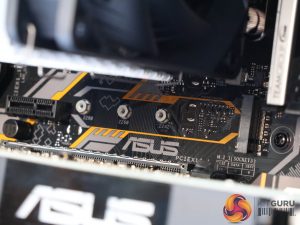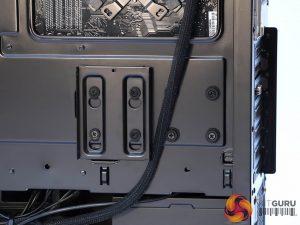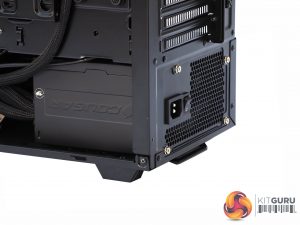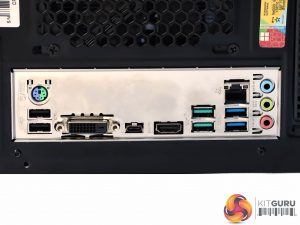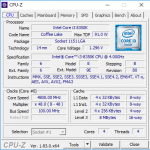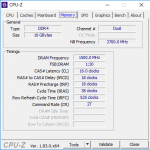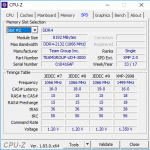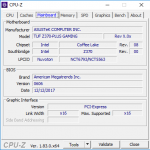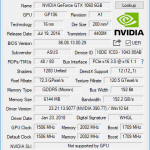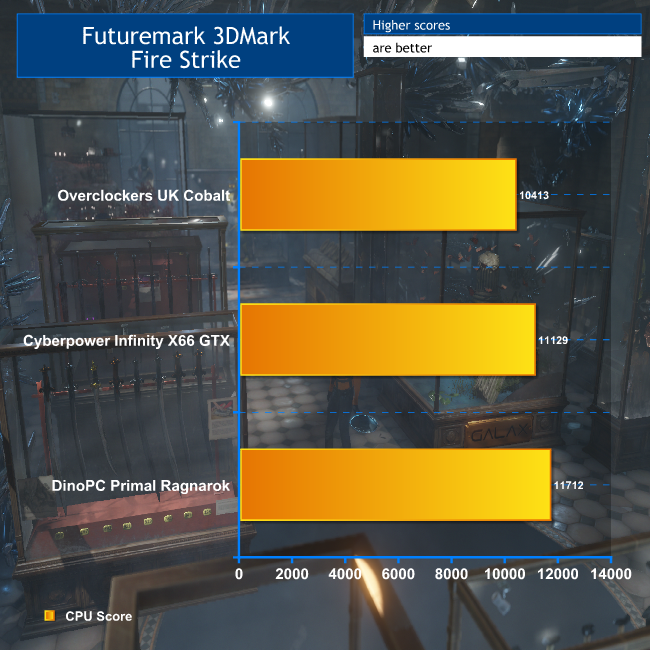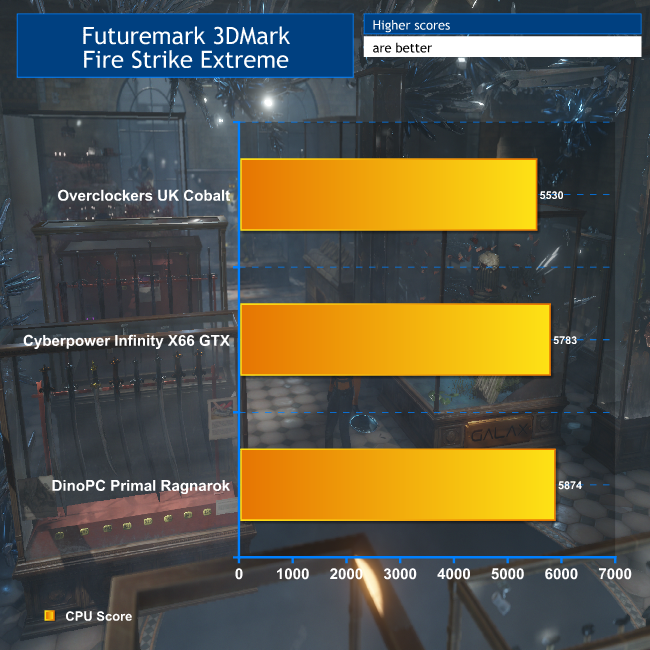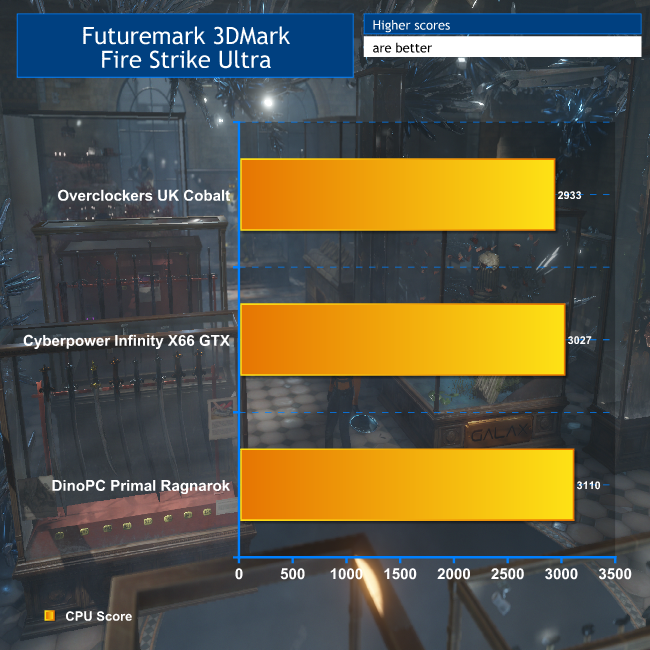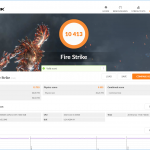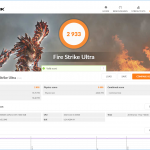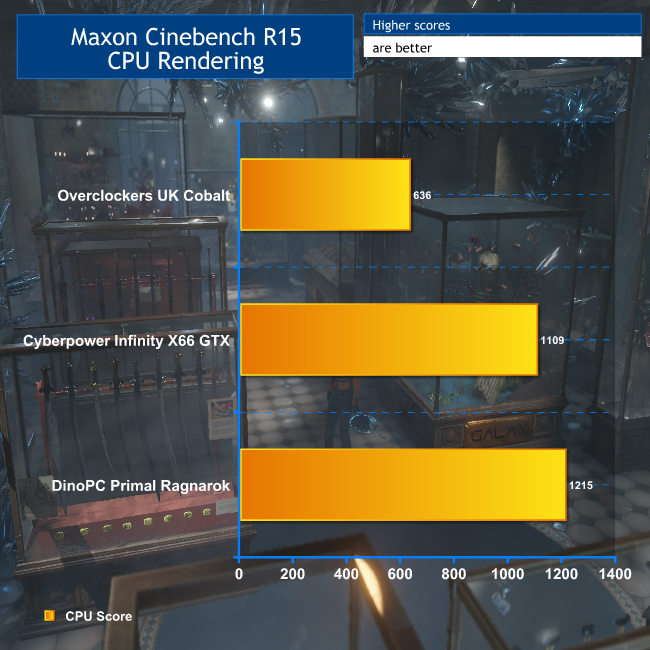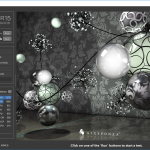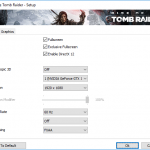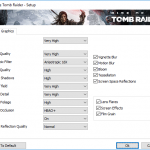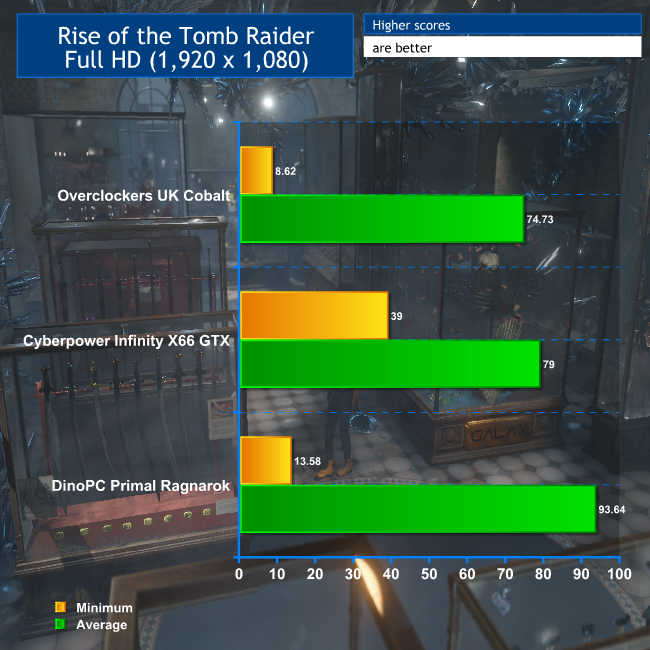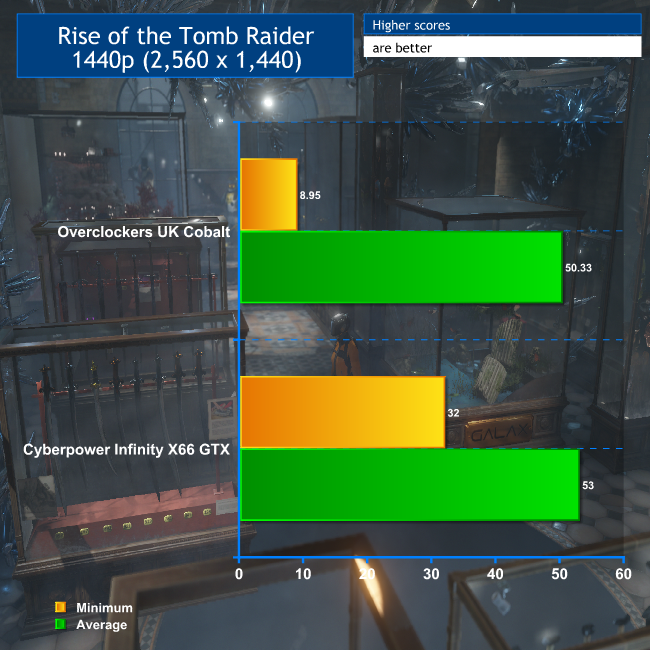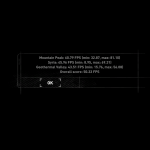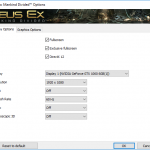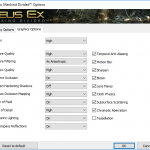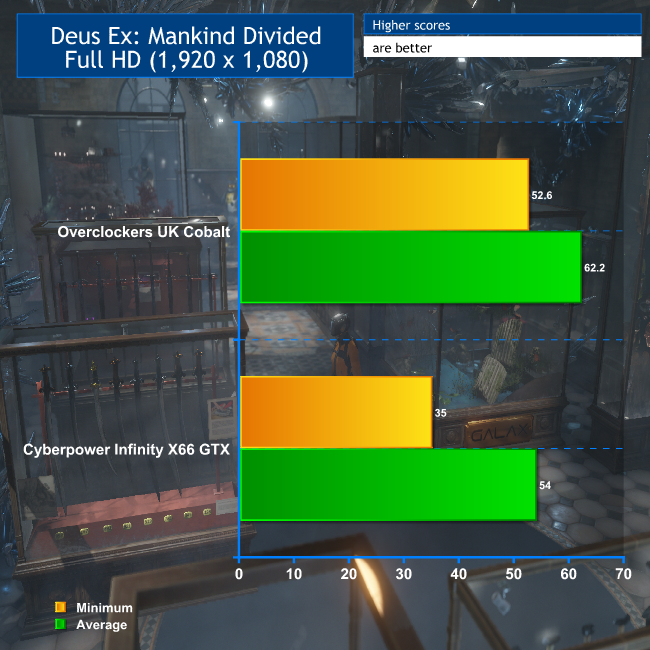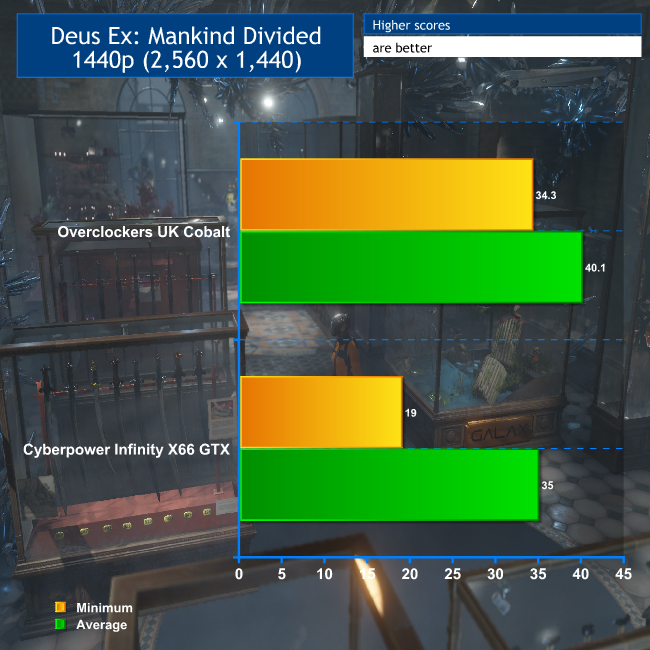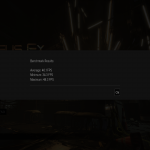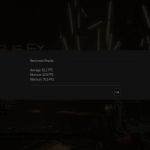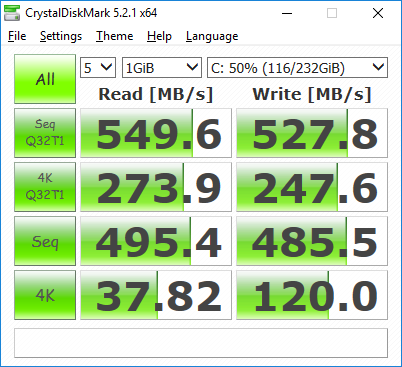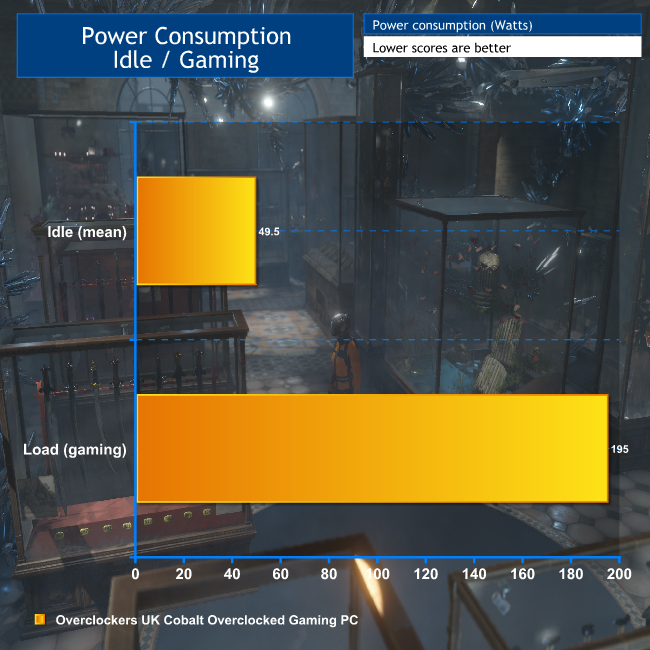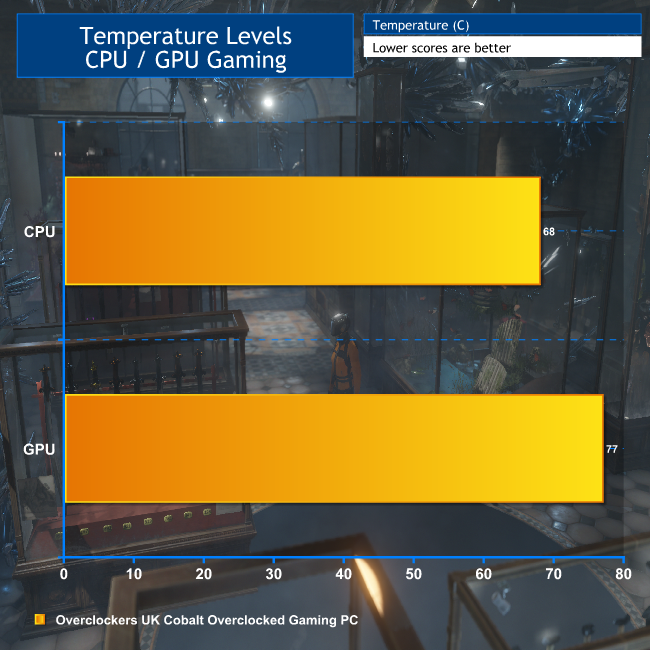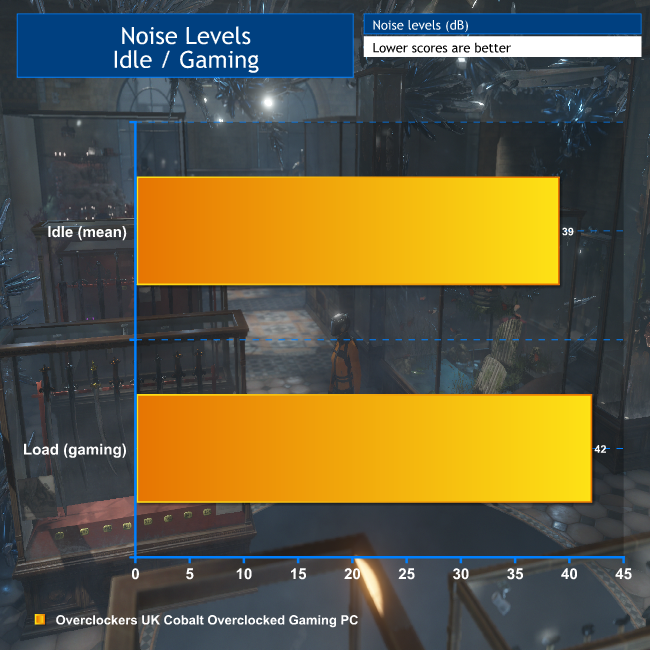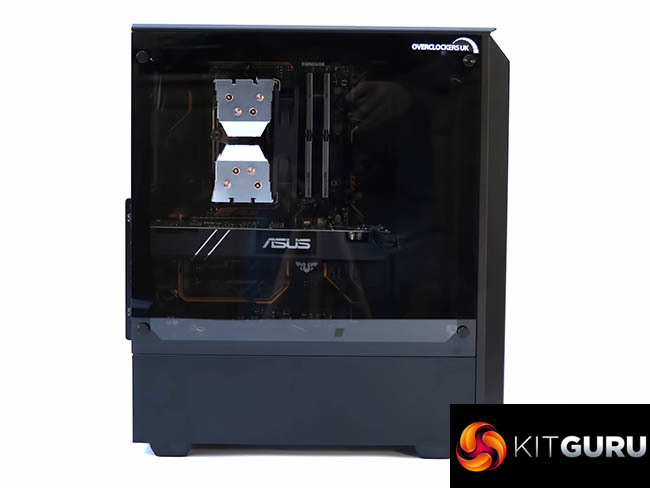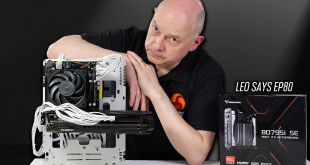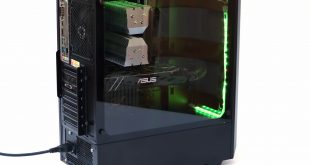
Intel's Core i5 used to be the bare minimum for a gaming PC. If you went below to a Core i3, Pentium or Celeron, you would be restricting your system to just two physical cores. With the launch of Coffee Lake, however, the Core i3 now offers four physical cores (but no Hyper-Threading), making it similar to earlier Core i5s – only cheaper. Our first look at the new Core i3 as a gaming contender comes from Overclockers UK in its Cobalt Overclocked Gaming PC.
The Core i3 in question is the 8350K, which is the obvious choice due to it being the only multiplier-unlocked version of the i3. It runs at a nominal 4GHz, but Overclockers has set the processor permanently to 4.8GHz across all four cores, and backed this up with a three-year warranty. In theory, you could be getting similar single-threaded gaming performance to a stock (not overclocked) Core i7-8700K, for half the price.
Alongside the Core i3 are 16GB of DDR4 memory and an ASUS GeForce GTX 1060 Turbo 6GB graphics card. There's an SSD as boot drive and regular hard disk for plenty of game storage, capable Alpenfohn Brocken CPU air cooling, and an attractively LED-lit Phanteks Eclipse chassis to put everything in. All this comes for a reasonable £1,234.94 inc VAT, so the Overclockers UK Cobalt promises huge gaming abilities for a reasonable price. Let's find out if it delivers on that promise.
System Configuration:
- Phanteks Eclipse P300 Glass Midi Tower Case – Black.
- Phanteks RGB LED Strip Starter Kit.
- Intel Core i3-8350K 4.0GHz (Coffee Lake) Socket LGA1151 Processor (overclocked to 4.8GHz).
- ASUS TUF Z370-Plus Gaming Intel Z370 (Socket 1151) DDR4 ATX Motherboard.
- Alpenfohn Brocken ECO CPU Cooler – 120 mm.
- ASUS GeForce GTX 1060 Turbo 6144MB GDDR5 PCI-Express Graphics Card.
- Team Group Vulcan T-Force 16GB (2x8GB) DDR4 PC4-24000C16 3000MHz DDR4 Memory.
- 250GB Samsung 850 EVO SSD 2.5in SATA 6Gbps SSD.
- 1TB Seagate BarraCuda 7200rpm SATA HDD.
- Cougar VTX 550W 80 Plus Bronze Power Supply.
- Windows 10 64 bit.
- 3 Years Warranty – Collect and Return.
Price for this system (at the time of writing): £1,234.94 (inc. VAT)
The Phanteks Eclipse P300 chassis isn't the most “out there” gaming case around, particularly so for the black version we were sent. There are numerous alternatives available from Overclockers UK which you can select via their configurator – many of which have significantly more “bling”. But the P300 is neat and understated, which we like.
However, it still sports a glass window to show off your components, and there is a variety of LED lighting available to accentuate this. Our sample came with the Phanteks RGB Starter Kit, which came installed around the front of the windowed area.
The packs of Haribo that Overclockers UK always puts in its shipping boxes never fail to bring a smile.
The front-accessible ports have a slightly unusual location on the Phanteks P300. Instead of being on the front, or front edge of the top, they sit on the right-hand edge of the top. You get two USB 3.0 and audio mini-jacks for headphones and a microphone. This is still a convenient place for these ports, particularly if you place your system on the floor to your left.
As we already mentioned, the centrepiece of the system is the Intel Core i3-8350K processor. This is a 4GHz quad-core CPU with no Hyper-Threading, but Overclockers UK has set all cores to run at 4.8GHz (although they will still drop down below this when not in use). The processor is kept under control by an Alpenfohn Brocken ECO air cooler with a 120mm fan, so it should provide plenty of airflow without burning your ears off with noise. It's rated to dissipate 160W of heat which should be more than enough for the Core i3-8350K, even when overclocked by 20 percent.
The processor is backed by 16GB of 3000MHz DDR4 memory. Since the Core i3 only sports a dual-channel memory controller, this is supplied as two 8GB DIMMs. This is CAS 16 memory, which is pretty standard for 3000MHz modules, so Overclockers UK hasn't cut any corners here, nor have they gone overboard with expensive DDR4. There are also two slots free should you wish to increase the amount of memory at a future date, although 16GB will be enough for now.
The CPU and memory sit on an ASUS TUF Z370-Plus Gaming motherboard. This is a LGA 1151 model (obviously), with four DIMM slots and a maximum RAM capacity of 64GB RAM. It also supports memory frequencies up to 4,000MHz. There are two PCI Express x16 slots, but only one supports x16 speed. The other is limited to x4. There are also four PCI Express x1 slots.
Overclockers UK has made the sensible move of opting for graphics based around the Nvidia GeForce GTX 1060, making it great for 1080p gaming. The GTX 1060 in question is the ASUS GeForce GTX 1060 Turbo 6GB model, and it's good to see OCUK opt for the 6GB variant instead of the 3GB model. The clocks have been left at stock, with GPU base of 1,506MHz and 1,708MHz boost, plus 8,008MHz GDDR5 memory on a 192-bit bus. It boasts 1,280 CUDA cores.
The ASUS motherboard includes two M.2 NVMe sockets stacked on top of each other, but neither have been used by Overclockers UK. Instead, a 250GB Samsung 850 EVO SATA-connected SSD is included for operating system and main applications, plus a 1TB Seagate BarraCuda (ST1000DM010) 7,200rpm SATA hard disk for main bulk storage, which will be a requirement for all those 50GB game installs you're likely to have after a month or two. The BarraCuda is a fairly standard HDD, and 1TB is towards the bottom of the scale these days in terms of capacity. But it does offer 64MB cache and is rated for 210MB/sec sustained throughput, which is decent for a HDD.
The two drives are hidden behind the chassis front fascia, which simply pulls off, and occupy the two 3.5in bays. There is also a vacant 2.5in caddy, with the mounting point for a second, behind the motherboard. You would, however, need to obtain the second caddy if you want to populate both. To install a second 3.5in hard disk, you would need to move the 2.5in SSD to the vacant caddy. There are six SATA ports in total on the motherboard, with two already taken.
The Cougar VTX 550W 80 Plus Bronze power supply follows the trend of other components. It's reasonably efficient at 88 per cent and should provide more than enough power for the installed components .
Aside from the top ports we have already mentioned, the motherboard presents an adequate selection on the rear. There's a combined PS/2 keyboard/mouse port, in case you have a legacy input device to attach, with two USB 2.0 ports underneath. Then there's DVI-D and HDMI for the processor's on-board graphics, which you won't be using. In between these is a USB Type-C port capable of 5Gbits/sec, not the full 10Gbits/sec of USB 3.1 Gen 2. However, there are two Type-A USB 3.1 Gen 2 ports further along, and two Gen 1, with a Gigabit Ethernet port above the latter. Only three audio mini-jacks are provided, so you would need to enlist the front ports as well for eight-channel analog audio.
Overall, the Cobalt is a well put together system considering it's low-to-mid-range status, with well chosen components that keep the price down but don't cut any corners. Our only quibble is that the SSD is SATA not NVMe. The latter would add £39 to the price, and the performance benefits are sufficient for this to be a recommended upgrade if you can spare the extra quid. We'd also suggest a 2TB drive whilst your at it, but that's not so essential.
The Overclockers UK system was running Windows 10, as you would expect. Here are the CPU-Z and GPU-Z readings showing the hardware configuration.
We will be testing the Overclockers UK Cobalt Overclocked Gaming PC against the DinoPC Primal Ragnarok and Cyberpower Infinity X66 GTX, although not every test is compared to both systems. Both systems are around the same price as the Cobalt.
DinoPC Primal Ragnarok Specification:
CPU: AMD Ryzen 5 1600X processor 3.6GHz-4.0GHz
Motherboard: Gigabyte AB350N Gaming WIFI (Socket AM4, 2x DDR4, Mini-ITX)
Memory: 16GB DDR4 2666MHz
Graphics: MSI Radeon RX 580 Armor OC 8GB
CPU Cooler: Corsair Hydro Series H55 Quiet
SSD: Samsung 256GB Polaris PM961 M.2 NVMe PCIe
HDD: Seagate BarraCuda 2TB 3.5″ SATA III
Case: Phanteks Enthoo Evolv ITX Black/Red (No Optical Drive, Mini-ITX)
Power supply: Corsair TX650M 650 Watt 80 Plus Gold Certified PSU
Operating System: Windows 10
Warranty: 5 year Bronze warranty
Price: £1,343 inc VAT.
Cyberpower Infinity X66 GTX Specification:
CPU: Intel Core i5-8600K Coffee Lake Six Core Processor OC 4.3GHz.
CPU Cooler: Cooler Master Seidon 240mm Liquid Cooling.
Motherboard Chipset: MSI Z370-A Pro.
Memory: Adata 16GB (2 x 8GB) 2400MHz DDR4.
Primary Drive: Corsair Force LE200 240GB Solid State Drive.
Secondary Hard Drive: 2TB Seagate Hard Drive 7200rpm 6Gb/s.
Graphics Card: MSI GeForce GTX 1060 6GB.
Power Supply: Cooler Master MasterWatt 600W 80Plus.
Case: In Win 101 Mid Tower w/ Tempered Glass Panel.
Lighting: 1 Red LED on rear fan. Red LED on In Win 101 Logo.
Audio: Onboard 7.1HD Audio.
LAN: Gigabit LAN.
Operating System: Microsoft Windows 10 64Bit.
Price: £1,199 inc VAT.
Tests:
3DMark 2.4 – Fire Strike, Fire Strike Extreme, Fire Strike Ultra
Cinebench R15 – All-core CPU and OpenGL graphics benchmark
Crystal DiskMark 5.2.1 – SSD and HDD transfer rates
Rise of the Tomb Raider – 1920 x 1080 and 2,560 x 1,440, Very High quality
Deus Ex: Mankind Divided – 1920 x 1080 and 2,560 x 1,440, High quality
3DMark
We used 3DMark's ‘Fire Strike' benchmark, which is designed to be used on gaming PCs. We ran the original version, the Extreme version, and the 4K Ultra version.
Although the Overclockers UK system loses out to both the Cyberower and DinoPC systems, it's only 6.5 per cent behind the former and 11 per cent behind the latter, which isn't bad considering how much more potent their CPUs are (on paper).
The Fire Strike Extreme score is slightly more favourable than the standard test, with the Cobalt 4.5 per cent behind the Cyberpower and 6 per cent behind the DinoPC.
With Fire Strike in Ultra mode, the Overclockers UK system is just 3 per cent behind Cyberpower's and 6 per cent behind Dino PC's rig, and that is commendable considering it uses ‘just' a Core i3. It certainly bodes well for our real-world gaming tests.
Maxon Cinebench R15
The Overclockers UK system's Intel Core i3-8350K may have a fast 4.8GHz clock across all cores, but it only has four of them and no Hyper-Threading, so it was always going to lose out in this test. The DinoPC's AMD Ryzen 5 1600X has six cores and twelve threads on offer, and the Cyberpower's six-core Intel Core i5-8600K also has HyperThreading, giving it 12 threads. The Overclockers UK system therefore performs as expected in this very efficiently-threaded CPU render test.
Rise of the Tomb Raider
We used an initial Full HD (1,920 x 1,080) resolution and graphics set to “Very High” quality with the Rise of the Tomb Raider built-in benchmark. We then set the resolution to 1,440p (2,560 x 1,440) but left all the quality settings the same.
At Full HD resolution, the DinoPC is clearly ahead of the other two systems, although the Cyberpower provides more consistent frame rates with a higher minimum. The Overclockers UK system is bringing up the rear, although this is still a very playable result.
We don't have 1,440p results for the DinoPC, but the Overclockers UK system is just a couple of frames behind the Cyberpower on average, which is commendable, although the Cyberpower again provides more consistent frame rates.
Deus Ex: Mankind Divided
We used an initial Full HD (1,920 x 1,080) resolution and graphics set to “High” quality with the Deus Ex: Mankind Divided built-in benchmark. This is a more demanding game than Rise of the Tomb Raider, so using the ‘very high' settings aren't recommended with a GTX 1060. We then set the resolution to 1,440p (2,560 x 1,440) but left all the quality settings the same.
The Overclockers UK system surges ahead of the Cyberpower at Full HD.
The story is similar at 1,440p. This is a promising result for Overclockers UK, showing the potential of the Core i3 when overclocked.
SSD Performance
The Samsung EVO 850 SSD may only use the SATA interface, but it's pretty much as good as it gets for a SATA SSD, offering 549.6MB/sec reading and 527.8MB/sec writing. The latter in particular is excellent, as many SSDs are considerably slower for writing than reading. Considering that SATA 3 can only offer 600MB/sec under normal conditions, you're getting just about as much bandwidth as is realistically possible.
The Seagate BarraCuda is specified at 220MB/sec reading and writing, and it delivers on the money for reading, with just a little drop off for writing. As conventional 7,200rpm hard drives go, this unit is also top of its performance game.
Idle temperature, power consumption and acoustic recordings are taken while the system sits at the desktop under minimum load. Then we run 3DMark's FireStrike Extreme and take the measurements again once the temperature, power or noise has settled to its maximum during the final Combined test. All fans were left to the default settings. We recorded noise levels from a 1m distance from the base unit at approximately the same level as the PC's chassis.
Power Consumption
The Overclockers UK system draws hardly any power for a gaming PC, not even broaching 200W under full load and consuming less than 50W when idle. This puts total power consumption at less than 40% of the power supply's rated output.
Thermal Performance
Nothing to worry about where temperatures are concerned, particularly for the CPU, which was hitting 68C under full load but mostly hovered around 60C. The sizeable air cooler is doing its job just fine. The GPU never went beyond 77C under maximum load, which is a perfectly fine temperature and won't cause any thermal throttling.
Acoustic Performance
This is a pretty quiet system too, only hitting an average of 42dB even under heavy load. The 120mm fans on the chassis and CPU cooler keep things pretty silent – impressive stuff.
The Overclockers UK Cobalt Overclocked Gaming PC is a great showcase for the Coffee Lake Intel Core i3. It doesn't quite humiliate the more expensive processors in the comparison systems. But considering that the 8350K is at least £20 cheaper than the AMD Ryzen 5 1600X and £60 cheaper than the Intel Core i5-8600K, the fact it can keep up reasonably well or give better results in some titles is very commendable.
The Core i3 doesn't have the multi-threaded grunt of the six-core CPUs we tested against, but there's still a decent amount of quad-core grunt available from the 8350K, while it also offers impressive single-threaded performance thanks to the 4.8GHz overclock. This is evident in the very good showing in our synthetic and real gaming tests.
The fact that Overclockers UK has been able to use a cheaper CPU means you can get a more rounded system in other areas. We might have preferred a NVMe SSD and 2TB instead of 1TB of conventional hard disk space, but the GeForce GTX 1060 is a solid choice for 1080p and 1440p gaming, the chassis is stylish and well made, plus the whole PC has been put together with considerable care.
The price is just about right for what you get, too. The low power consumption and lack of noise are merely added bonuses. This may not be the absolute fastest gaming PC you can buy for around £1,200, but it's overall a well-balanced configuration that gives you plenty of PC for your money.
You can buy the Overclockers UK Cobalt for £1,234.94 (inc. VAT).
Discuss on Facebook HERE.
Pros:
- Intel Core i3-8350K provides great 4.8GHz overclock.
- Attractive Phanteks chassis.
- Decent 16GB of memory.
- Nvidia GeForce GTX 1060 is a great mid-range graphics choice for gaming.
- Low power consumption when gaming.
- Quiet.
- Reasonable storage allocation.
Cons:
- NVMe SSD would have been the icing on the storage cake.
- Ryzen 5 1600 offers 6C/12T for only a little extra compared to this i3.
- A 2TB+ secondary hard disk would give more room for huge game installs.
KitGuru says: The Overclockers UK Cobalt Overclocked Gaming PC really shows the leap that Intel has made with Coffee Lake, as its Core i3 now gives the last-gen Core i5 a serious run for its money. It's a very good system overall, too, with a balanced selection of components throughout.
 KitGuru KitGuru.net – Tech News | Hardware News | Hardware Reviews | IOS | Mobile | Gaming | Graphics Cards
KitGuru KitGuru.net – Tech News | Hardware News | Hardware Reviews | IOS | Mobile | Gaming | Graphics Cards


